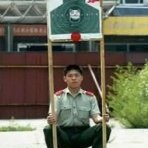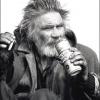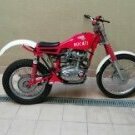
woody
Members-
Posts
4,076 -
Joined
-
Last visited
-
The 350 MAR was produced from late 1975 so it has the later type shafts for kickstart and gear lever. It will be the same spline as the enduro engine, assuming no-one has changed parts on it at any time. Just count the number of splines and compare to double check
-
Same for all models, they changed the gear and kickstart shaft sizes around late 1973
-
Yes, you'll need another kickstart and gear lever with the correct number of splines, the earlier engine shafts have more splines than post 1973 engines The exhaust won't be a straight fit, yours has a flange held in the cylinder by the threaded screw in collar. The exhaust on the enduro engine is a push fit held with springs. To get yours to fit you have to cut off the flange so it pushes into the cylinder and weld two hoops on it to locate the springs - as long as it is the right diameter to fit. But how the enduro motor will run with the trials exhaust I wouldn't know You also need a carburettor, yours won't fit as it is bolt on and probably also too small for the porting, whereas the enduro cylinder is a stub fitting
-
The stator can be checked, you'll need the workshop manual which will give the expected readings, I've no idea, electrics are a mystery to me. In the UK we can get them repaired. The motoplat coil for the Ossa is a combined coil / cdi so you need the two connector type. New replacements are available (at least here in the UK they are) When I saw the picture of your replacement engine I assumed it was the same year as yours but someone had changed the cylinder head for a later one. It seems the chassis number list I have incorrectly lists the engine as a 1972 but it's actually a 1976 enduro version, so, the kickstart and gear shafts have a different number of splines from your explorer engine. I think that the exhaust fitting on the later enduro motor is push fit with springs, not threaded collar, so your exhaust header isn't a straightforward fit To be honest you're probably better off fixing your explorer engine, all parts are available.
-
The centre cases are all the same casting so are interchangeable. The reason the ignition cover might look different is because the rear most part sometimes gets cut off or modified, either to stop a build up of mud or they simply get broken by derailed chains The replacement engine is an enduro engine, the Explorer is a trials engine. The enduro motor will have a different state of tune/porting and different gear ratios. They also use an expansion chamber motocross type exhaust although your Exporer exhaust should still fit into the cylinder. They use a 32mm carb as they're basically a race engine It's not an uncommon problem to find a different engine won't slide into the rear frame mounts. You might find that the mounting brackets have been squashed inwards slightly with repeated tightening over the years. You can try puting a piece of solid bar against the inside face of one and putting a solid bar through the hole in the other and tapping outwards, then repeat on the other side to try and open them out a bit. Or just take a bit off the engine to enable it to slide in
-
In the US you have Hogans, Alex Snoop, Keith Lynas, Vintco
-
The retaining nut is almost as big as a 10 tooth sprocket which means the chain rides up over the points of the nut when it is flush against the sprocket. To use a 10 tooth there is a nut with a shoulder on the inside to give clearance to the chain, you need to use this nut Depends where you live, in the UK, In Motion have all you need I run a dished rear sprocket on my MAR which only comes in 44 tooth size, this works well with the 10 tooth front
-
It's a 1972/73 Sherpa, the model number is 92. The frame/engine numbers are close because the UK importer used to sell them as 'kits' to avoid purchase tax, so when the bikes arrived from Spain with engine and frame numbers that matched, the importer removed engines and then sold a bike and engine to the customer as a 'kit'. It's a Bultaco frame, series 2 type 92, no idea why the top half looks chrome, the rear shock top mounts have been lowered to make them more angled. The tank is a UK made item as using the original Bultaco fibreglass tank on the road was illegal at the time as fibreglass tanks were outlawed, so UK bikes could have these fitted
-
An Ossa TR77 can't be started with the clutch pulled in as it doesn't have primary kickstarting
-
Sorry I'm useless with electrics so no help with testing electrical components. The 5 speed manual is available to download which should have readings in it. Or you can send the stator and coil to Bradford ignitions as he can test and repair Motoplat stators and sometimes coils If your wires still come out from the bottom of the ignition casing and run under the engine, there's a chance that they may have got chamfered or broken as they have to bend a sharp 90 degrees, once old and brittle the sheath can crack causing shorts or they can just break. Also, with a bike that's used hard the bash plate gets smashed up towards the engine and can help break the wires. A mod to stop this is to drill a hole through the top front of the casing by the engine mount and run the wires behind the stator, through the hole and up the front frame tube. This involves grinding away some of the ribbing behind the stator to accommodate the wires. If your bash plate has go bent upwards, also worth checking that the head of the sump plug bolt isn't exposed as that can end in tears if it catches a rock. Tapered headless allen bolts solve that problem
-
The end float on the gear shaft won't affect the plunger as that acts on the selector drum, but too much end float on the gear shaft means the selector fork is not in contact with the selector drum when the shaft moves too far to the left. Inside the clutch case there are two washers on the gear shaft, normal and wave washer, located by a circlip. These restrict the shaft end float, if they aren't there the shaft will continue to work its way outwards, disengaging with the drum, nothing that a kick with your heel won't solve to push it back in though
-
If the engine is in the bike, put it in 1st and try just tapping the gear lever into neutral with your heel whilst rocking the bike. If the shimming is making the gear selection a bit stiff it could cause the selector to go straight past neutral to 2nd and vice-versa. Tapping it with your heel should move it just enough for neutral. It's how I get neutral on my 250 as the gear selection is a bit stiff, my 350 gets neutral a lot easier
-
Not sure what you mean by always in gear, if the box will go from 1st to 2nd and vice-versa you're going past neutral. With the bike in neutral the final drive will still turn due to drag on the gears. Put the bike in first gear, then whilst turning the engine gently pull the gear lever up but not hard enough that it goes straight to second, or just tap it gently up with your hand. Hold the final drive with one had and turn the engine, if the box is in neutral the drive won't turn, if it's in a gear you won't stop the final drive turning. It might take a few goes to get neutral, much easier with the engine in the bike and rocking the bike backwards and forwards I'm assuming the detent plunger is fitted and working properly
-
Carb for the Jumbo was 28mm, never heard of 30mm fitted as OEM. For a non-reed engine the pilot is 50 and slide 60, needle X2 and needle jet AS272. The delorto should perform fine if it's not worn out There is quite a difference between the reed and non-reed motors in power delivery. I tried a non-reed back to back with my reed engine bike when I had one and the non-reed was pretty flat with slow pick up off idle/pilot before surging and getting lively when the revs came up. Are you mistaking that for lean jetting? The reed engine lit up instantly I've run Delorto and OKO back to back on my 340 Sherpa and can't fell any noticeable difference which makes me wonder if it is just the slow take up of the non-reed engine that is giving the impression of weak jetting below 1/4
-
Whether it fits depends on which Sherpa you have which you haven't mentioned. A Sherpa seat won't mate up to that tank very well, if at all






